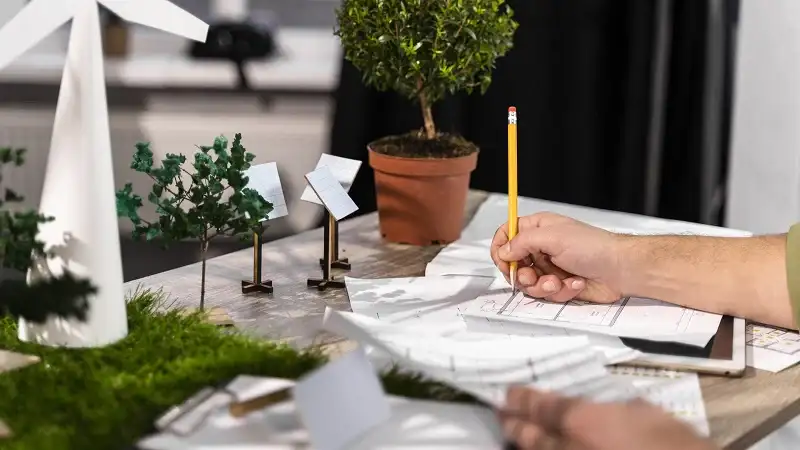Landscape design is more than just arranging plants and adding decorative features. For businesses, it is an investment that enhances property value, strengthens brand image, and improves customer experiences. A well-designed outdoor environment can attract clients, encourage productivity among employees, and create a strong sense of identity. This article explores practical business tips for creating a functional and beautiful landscape design, blending aesthetics with efficiency to maximize long-term benefits.
Why Landscape Design Matters in Business
1. First Impressions Count
The exterior of any business property is the first thing visitors notice. A clean, inviting, and well-structured landscape sets the tone for professionalism and reliability.
2. Enhancing Brand Identity
Landscape choices—such as color palettes, materials, and architectural style—can reflect a company’s values. A sleek, modern design might signal innovation, while lush greenery and natural layouts may communicate sustainability.
3. Functional Benefits
Beyond aesthetics, landscaping can serve practical functions:
-
Shading to reduce energy costs.
-
Outdoor seating for employees or customers.
-
Defined pathways to improve accessibility and safety.
Key Principles of Functional and Beautiful Landscape Design
To achieve balance, businesses should follow certain design principles:
1. Simplicity and Organization
Avoid clutter. A clear, organized layout allows easy movement and ensures the space looks professional.
2. Balance Between Function and Beauty
A purely decorative design may look attractive but fail to serve daily business needs. A truly functional landscape blends aesthetics with usability.
3. Sustainability
Incorporating drought-resistant plants, efficient irrigation, and native species not only saves costs but also demonstrates eco-responsibility.
Step-by-Step Guidelines for Businesses
Step 1: Assess the Purpose of Your Landscape
Define what the space will achieve. Is it to impress clients, create relaxation zones for employees, or manage environmental factors like drainage and shade?
Step 2: Evaluate the Space
Take note of:
-
Soil quality
-
Sunlight exposure
-
Drainage patterns
-
Accessibility
This assessment ensures that design decisions are practical and sustainable.
Step 3: Choose a Design Theme
Consistency is key. Select a theme aligned with your brand identity—modern, minimalist, natural, or traditional—and maintain that style throughout the property.
Step 4: Prioritize Low-Maintenance Solutions
Businesses should avoid overly complex designs that demand constant upkeep. Instead, invest in hardy plants, durable materials, and efficient watering systems.
Step 5: Plan Pathways and Flow
Walkways should be safe, logical, and welcoming. Curved paths add elegance, while straight lines offer a more professional and structured look.
Step 6: Integrate Outdoor Seating
Benches, shaded areas, and small gathering spots encourage employees to relax and can even provide informal meeting spaces.
Step 7: Add Lighting for Safety and Ambience
Outdoor lighting not only improves security but also enhances the nighttime beauty of the landscape. Businesses benefit from well-lit paths, entryways, and focal points.
Business Tips for Long-Term Success
-
Budget Strategically – Allocate funds not only for installation but also for long-term maintenance.
-
Think Seasonal – Choose plants and design features that remain appealing year-round.
-
Use Technology – Automated irrigation and smart lighting systems can reduce costs and ensure efficiency.
-
Seek Employee Input – Staff members can provide insight into how the space can be more functional for daily use.
Trends Shaping Modern Landscape Design in Business
1. Eco-Friendly Designs
More companies are adopting native plants, rain gardens, and green roofs to showcase environmental responsibility.
2. Multi-Functional Outdoor Spaces
Outdoor areas are no longer just decorative. They double as social spaces, dining areas, or event venues.
3. Smart Technology Integration
Automated sprinklers, motion-sensor lighting, and energy-efficient water features are gaining popularity.
4. Minimalist Aesthetics
Clean lines, open lawns, and uncluttered plant arrangements remain popular for their simplicity and elegance.
Case Examples of Business Landscaping Success
-
Corporate Office Parks – Many offices use landscape design to provide shaded walking trails and recreational spaces, improving employee wellness.
-
Retail Centers – Shopping malls often add green courtyards and fountains, encouraging visitors to stay longer.
-
Hotels and Resorts – Aesthetic gardens and functional outdoor lounges attract customers and create lasting impressions.
Common Mistakes to Avoid
-
Overcrowding plants without considering long-term growth.
-
Neglecting proper drainage, leading to waterlogging.
-
Choosing high-maintenance designs that increase costs.
-
Ignoring safety elements such as lighting and clear walkways.
Practical Maintenance Guidelines
-
Regular Inspections – Monitor plant health, soil conditions, and irrigation efficiency.
-
Seasonal Adjustments – Prune, fertilize, and replant according to seasonal changes.
-
Professional Oversight – Even with low-maintenance designs, occasional expert guidance ensures lasting quality.
The Balance Between Functionality and Aesthetics
Every business landscape should combine practical usability with visual appeal. Functionality makes the space useful and cost-effective, while beauty enhances brand image and customer experiences. Achieving this balance is the foundation of effective business tips for creating a functional and beautiful landscape design.
Conclusion
For businesses, landscaping is not just about greenery—it is a strategic tool. A functional, beautiful, and well-maintained outdoor design attracts clients, boosts employee morale, and enhances overall brand reputation. By following these principles—simplicity, sustainability, and usability—companies can create landscapes that are both cost-efficient and visually impressive.
Whether it is a corporate office, retail space, or hospitality venue, applying thoughtful business tips for creating a functional and beautiful landscape design will deliver long-term benefits that go beyond appearance. A well-planned landscape becomes a business asset, blending practicality with elegance in every corner.

